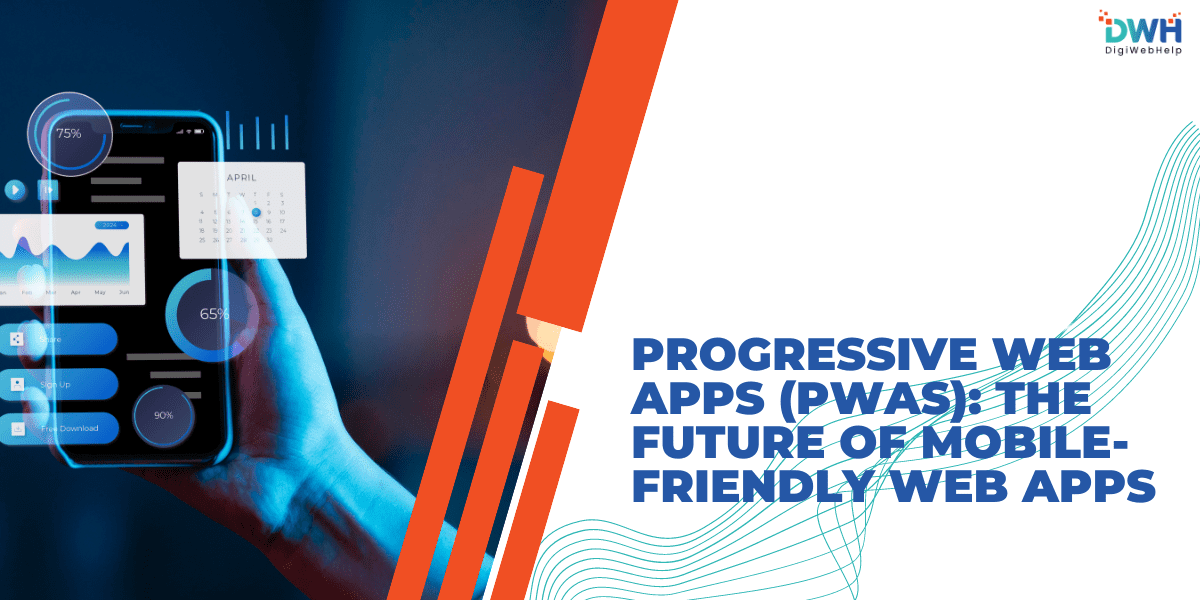
Progressive Web Apps (PWAs): The Future of Mobile-Friendly Web Apps
The evolution of web and mobile apps has been a fascinating journey. From static web pages to dynamic and responsive pages and now to app-like experiences within the browser, the landscape has continuously evolved to meet the growing demand for mobile-friendly user experiences.
With smartphones and tablets continuing to rule, the need for solutions to bridge the gap between web and mobile apps has never been more critical. Enter Progressive Web Apps (PWAs) – a game-changing approach that promises to deliver the best of both sides. It merges the adaptability of web apps with the functionality of native apps.
Importance of Mobile-Friendly Web Solutions
In today’s digital era, Mobile-ready web solutions are not merely an option; they are a necessity because the majority of the internet traffic comes from mobile devices. Hence, any businesses need to focus on mobile optimization to reach and engage with their audience effectively.
Mobile users expect fast, responsive, and user-friendly experiences. If they don’t get these, they might become frustrated and abandon the app or website. This growing emphasis on mobile-first strategy has paved the way for PWAs. They offer an innovative and creative solution to creating mobile-friendly web experiences that do not compromise functionality and performance.
What are Progressive Web Apps (PWAs)?
Progressive Web Apps (PWAs) are a hybrid between traditional web apps and native mobile apps. They use modern web technologies to deliver an experience similar to apps directly through the browser without the need to download an app from the app store. Key features of PWA include:
- Responsive Design: PWAs adapt to any screen size and device. This ensures a consistent user experience across desktops, tablets, and mobile phones.
- Offline Access: Using Service Workers, PWAs can store essential resources for offline use. This means users can access content even without an internet connection.
- App-Like Experience: PWAs mimic the look and feel of native apps to offer smooth animations and interactions.
- Installable: Users can add PWAs to their home screens, giving them quick access like native apps.
- Secure: PWAs are served over HTTPS, ensuring secure connections and protected user data.
How PWAs Differ from Traditional Web Apps
PWAs differ from regular web apps in several ways. Traditional apps require a consistent internet connection and are accessed through a browser. However, PWAs can function offline, thanks to Service Workers. This feature is particularly helpful in areas with unstable internet connectivity.
PWAs also offer an immersive, app-like experience with smoother interactions and better performance. Compared to native apps, PWAs don’t need to be downloaded from app stores. Native apps have deeper integration with device features, but PWAs are rapidly closing the gaps with advancements in web APIs.
Advantages of PWAs for Users
- Offline Functionality
One of the most significant benefits of PWAs is their ability to work offline. The core technology that makes this possible is Service Workers. This technology enables caching essential resources, so the app keeps running without the internet. This feature ensures that users can access the content and interact with the app in areas without internet connectivity.
- Faster Load Times
PWAs are designed to load quickly, regardless of the user’s internet speed. They use caching strategies and optimized content delivery to reduce load times. Faster load times enhance user experience and contribute to better SEO ranking.
- Push Notifications
PWAs use push notifications just like native apps. They allow businesses to engage users by sending updates, promotions, and reminders. Push notifications help users stay active on the app, promoting more interactions and retention rates.
- No Need for App Store Installation
PWAs boast a great feature —you can access them right from your web browser without the need for app store downloads. This eliminates the friction of browsing app stores, waiting for downloads, or managing storage space. Users can simply add PWAs to their home screens and access the app when needed.
Advantages of PWAs for Businesses
- Cost-Effectiveness
Developing and maintaining separate web and native apps can be costly and time consuming. PWAs offer a cost-effective alternative. They provide one tap access across all platforms – desktop, mobile, and tablets. This unified approach reduces development costs and simplifies maintenance.
- Increased Reach and Engagement
PWAs have the capability to engage a larger audience as they work on all platforms. Since they can be accessed through any browser on any device, businesses can engage with users anywhere. This leads to higher engagement as users are more likely to interact with apps that are easy to use and perform well.
- Improved SEO
PWAs offer several SEO benefits. Their fast load times, mobile-friendly design, and secure HTTPS connection contribute to better search engine rankings. Google’s mobile-first indexing prioritizes sites that are good for mobile. This gives PWAs an edge in search results.
Challenges and Limitations of PWAs
- Limited Browser Support
PWAs are supported by most modern browsers. However, there are still limitations, especially with iOS. Safari, Apple’s browser, has been slower in adapting certain PWA features like push notifications and background sync. This slows down how PWAs perform on iPhones and iPads. However, ongoing updates and improvements are gradually closing the gap.
- Access to Device Features
Unlike traditional apps, PWAs have limited access to device-specific features like Bluetooth, NFC, or advanced camera functionalities. While web APIs are evolving, PWAs still can’t access certain features. This may be a downside for apps that rely heavily on these functionalities.
- App Store Distribution
One of the challenges PWAs face is visibility and distribution. They’re not listed in traditional app stores like Apple App Store or Google Play Store. These stores give apps a visibility boost. Without that, businesses must rely on alternative strategies such as SEO and social media to promote these apps.
The Future of PWAs
- Growing Adoption
The adoption of PWAs is on the rise, with more businesses recognizing their potential to deliver mobile-friendly experiences. According to recent statistics, the number of companies implementing PWAs is steadily increasing. The demand for faster, reliable, and user-friendly web apps drives this trend.
- Technological Advancements
PWA technology is rapidly evolving. We can expect to see improvements like enhanced browser support, stronger APIs capabilities, and smoother performance. Enhanced iOS support combined with new APIs allow deeper integration with device features. This expands the functionalities and appeal of PWAs.
- Potential to Replace Native Apps
Native mobile apps currently dominate the mobile app landscape, but PWAs have the potential to replace them for many businesses and users. As technology advances and limitations of PWA are addressed, they could become the preferred solution for delivering mobile-friendly experiences across platforms.
Conclusion
Progressive Web Apps represents a significant step towards evolution of web and mobile apps. They offer a compelling blend of performance, accessibility, and affordability. As businesses and developers explore and embrace this technology, PWAs stand to become a key part of mobile-friendly web solutions, shaping the future of how we interact with digital content.










